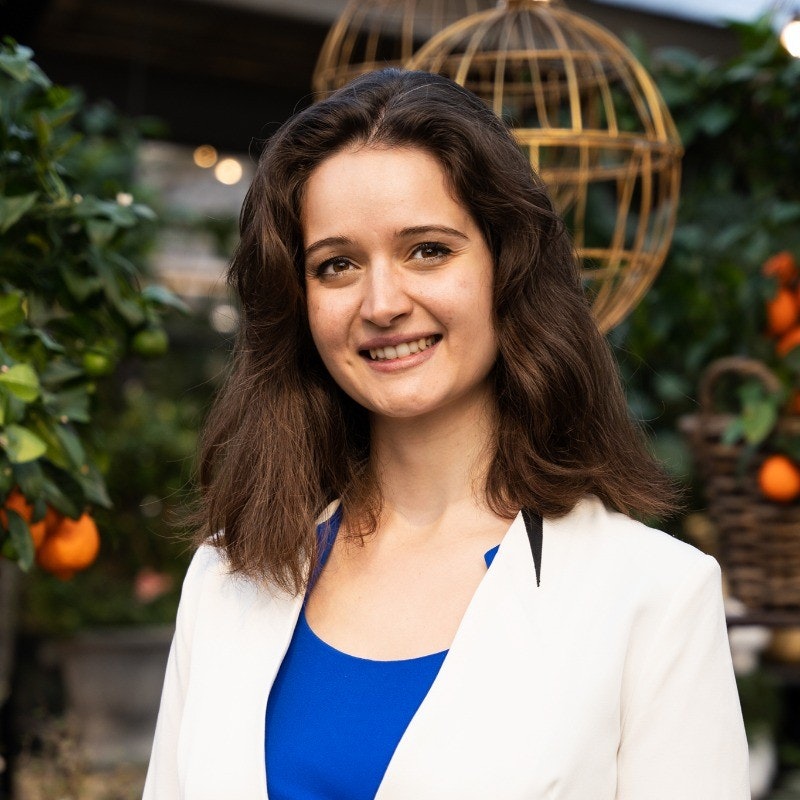Solar panels and wind farms are established technologies but what about other emerging technologies needed to get us to net zero?
Researchers and startups around the world are developing ambitious solutions that will decarbonise everything from agriculture to plastics production. Scaling their technologies isn’t easy, though, given the substantial capital they require for R&D, the cost of carbon-heavy alternatives being extremely affordable, and the level of niche technical expertise that is difficult for a generalist VC firm to support.
Accelerator programmes tailored to climate technologies, which provide not just funding but connections to corporates who could become future customers, can help bridge these gaps and support more companies in scaling their solutions.
Here, we meet two businesses that took part in the Breakthrough Energy Fellows programme.
NitroVolt: Helping farmers make their own fertiliser
Much of the food we eat wouldn’t be on our plates without ammonia, a chemical compound essential for producing fertiliser.
The problem is the industrial procedure used to make it, known as the Haber-Bosch process, is carbon-intensive. According to the International Energy Agency, 2.4 tonnes of CO2 are emitted for every tonne of ammonia produced, making it twice as emissions-intensive as crude steel.
Ammonia is used in basically every industry you can think of.
NitroVolt, a startup in Denmark, is working on a solution: It is developing units that will need just water, air and renewable electricity as the input, and by using a recyclable lithium catalyst, the unit can combine nitrogen and hydrogen atoms into ammonia. These devices will be small enough to be installed on farms, and no high temperatures, pressurisation or fossil fuels will be required. “Ammonia is used in basically every industry you can think of,” says Suzanne Zamany Andersen, NitroVolt’s CEO and cofounder. “Finding an electrified way of doing this has been a holy grail for many years.”

A physics engineer by background, Andersen was encouraged by a professor to take on the green ammonia challenge when applying for her PhD. Within a year, “we found this method that works,” she says. “And once you have something that works, it’s just an engineering challenge to make it better.”
In July 2023, following seven years of research and several conversations with farmers keen on having green ammonia-producing units on their land, Andersen joined forces with co-founder Mattia Saccoccio to found NitroVolt. Not long after, they were accepted into the third Breakthrough Energy Fellows cohort. The programme helped NitroVolt transition from lab to business, offering a grant and support in areas like “IP strategy, techno-economic analysis and founder burnout,” Andersen says. Mentors were also available to help with tasks like creating sophisticated financial projections and structuring supplier agreements.
Once you have something that works, it’s just an engineering challenge to make it better.
The company has since gone on to raise €3.5m in seed funding and grown its headcount from three to 11 people.
At scale, NitroVolt’s solution will help reduce the roughly half a gigaton of CO2 emitted every year through ammonia production, according to Andersen. It will also empower farmers to produce their own ammonia, instead of relying on exports from centralised producers in the US, Russia and China, reducing their exposure to geopolitical instability. “What farmers and [other] end users are interested in is resiliency against price fluctuations,” says Andersen. “We see [that as] the unique selling point of the system.”
Dioxycle: Turning carbon emissions into useful chemicals
Plastic shopping bags may be passé, but the same can’t be said for ethylene, the chemical used to make them, and enormous volumes of other essential products used around the world.
One of the dominant methods used to produce ethylene is breaking down crude oil through an energy-intensive steam-cracking process, which emits around 1.5 tons of carbon emissions per ton of ethylene produced. But because the chemical is used in everything from clothing and medical devices to car tyres and antifreeze, it’s hard to imagine a world without it.
Once ethylene is produced sustainably, everything it’s used to make has a reduced carbon footprint.
What if there was a better way to make it? That’s the idea behind Dioxycle, a startup developing an electrolyser that turns carbon emissions into ethylene, powered by electricity. Cofounders Sarah Lamaison and David Wakerley met as researchers at Cambridge University, before founding the company in January 2021 in Paris, France. They had proved their idea worked with a postage-stamp-sized electrolyser they had built, using it to apply to the Breakthrough Energy Fellows programme later that year.
At scale, the tech could cause an “emission-reduction domino effect,” Wakerley explains. “Once ethylene is produced sustainably, everything it’s used to make has a reduced carbon footprint.”
During the two-year fellowship, Dioxycle were connected with technical experts who guided them on designing electrolysers to be used at commercial scale, as well as business experts who could provide insights on what corporates need when partnering with breakthrough tech companies. By 2023, the tiny electrolyser that Dioxycle started with had grown to the size of a suitcase, and following completion of the programme — and a further $17m of Series A funding secured in July 2024 including from Breakthrough Energy Ventures — it can now build car-sized electrolysers and can run its test cells for the thousands of hours necessary to make them commercially viable. The company has also grown from four people at the start of the programme to 28, as Dioxycle builds out its engineering and commercial team.

Participating in the Fellows programme, which also supports companies with R&D costs, gave Dioxycle the “mental freedom” to pursue development of its technology for real-world use at scale, Lamaison says. “It’s nice to have this binary answer,” Lamaison says, reflecting on the transition from academia to entrepreneurship. “Does it work or does it not?”
Applications are now being accepted for the 2025 cohort of Breakthrough Energy Fellows. Learn more here.
Read the orginal article: https://sifted.eu/articles/climate-techs-scaling-breathrough-technologies-brnd/


